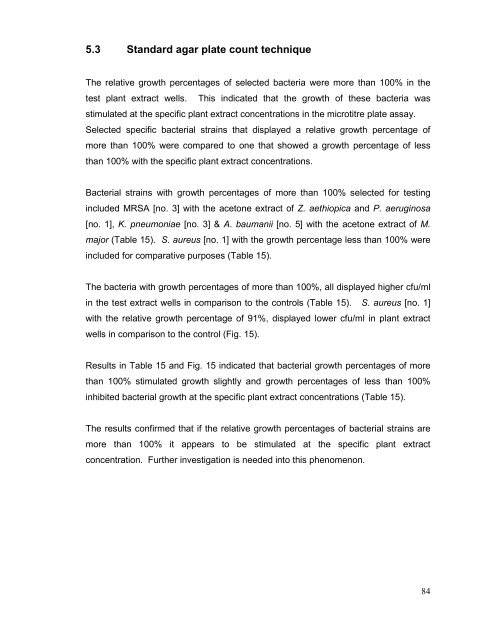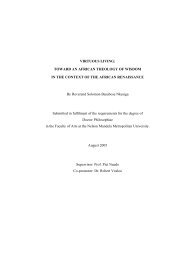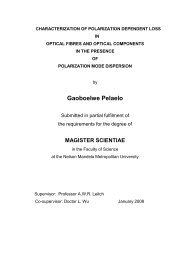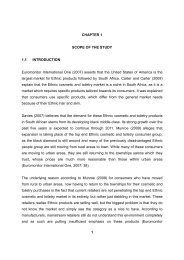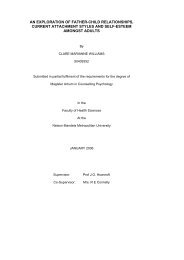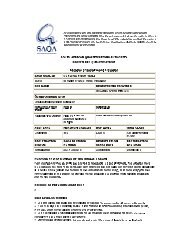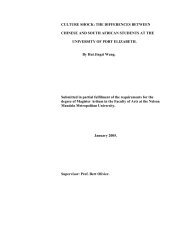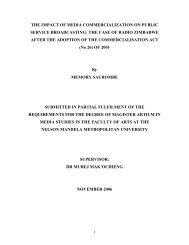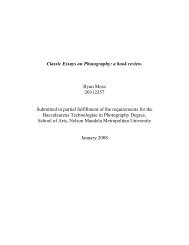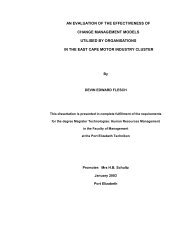an investigation into the antibacterial activities of medicinal plants ...
an investigation into the antibacterial activities of medicinal plants ...
an investigation into the antibacterial activities of medicinal plants ...
You also want an ePaper? Increase the reach of your titles
YUMPU automatically turns print PDFs into web optimized ePapers that Google loves.
5.3 St<strong>an</strong>dard agar plate count technique<br />
The relative growth percentages <strong>of</strong> selected bacteria were more th<strong>an</strong> 100% in <strong>the</strong><br />
test pl<strong>an</strong>t extract wells. This indicated that <strong>the</strong> growth <strong>of</strong> <strong>the</strong>se bacteria was<br />
stimulated at <strong>the</strong> specific pl<strong>an</strong>t extract concentrations in <strong>the</strong> microtitre plate assay.<br />
Selected specific bacterial strains that displayed a relative growth percentage <strong>of</strong><br />
more th<strong>an</strong> 100% were compared to one that showed a growth percentage <strong>of</strong> less<br />
th<strong>an</strong> 100% with <strong>the</strong> specific pl<strong>an</strong>t extract concentrations.<br />
Bacterial strains with growth percentages <strong>of</strong> more th<strong>an</strong> 100% selected for testing<br />
included MRSA [no. 3] with <strong>the</strong> acetone extract <strong>of</strong> Z. aethiopica <strong>an</strong>d P. aeruginosa<br />
[no. 1], K. pneumoniae [no. 3] & A. baum<strong>an</strong>ii [no. 5] with <strong>the</strong> acetone extract <strong>of</strong> M.<br />
major (Table 15). S. aureus [no. 1] with <strong>the</strong> growth percentage less th<strong>an</strong> 100% were<br />
included for comparative purposes (Table 15).<br />
The bacteria with growth percentages <strong>of</strong> more th<strong>an</strong> 100%, all displayed higher cfu/ml<br />
in <strong>the</strong> test extract wells in comparison to <strong>the</strong> controls (Table 15). S. aureus [no. 1]<br />
with <strong>the</strong> relative growth percentage <strong>of</strong> 91%, displayed lower cfu/ml in pl<strong>an</strong>t extract<br />
wells in comparison to <strong>the</strong> control (Fig. 15).<br />
Results in Table 15 <strong>an</strong>d Fig. 15 indicated that bacterial growth percentages <strong>of</strong> more<br />
th<strong>an</strong> 100% stimulated growth slightly <strong>an</strong>d growth percentages <strong>of</strong> less th<strong>an</strong> 100%<br />
inhibited bacterial growth at <strong>the</strong> specific pl<strong>an</strong>t extract concentrations (Table 15).<br />
The results confirmed that if <strong>the</strong> relative growth percentages <strong>of</strong> bacterial strains are<br />
more th<strong>an</strong> 100% it appears to be stimulated at <strong>the</strong> specific pl<strong>an</strong>t extract<br />
concentration. Fur<strong>the</strong>r <strong>investigation</strong> is needed <strong>into</strong> this phenomenon.<br />
84


